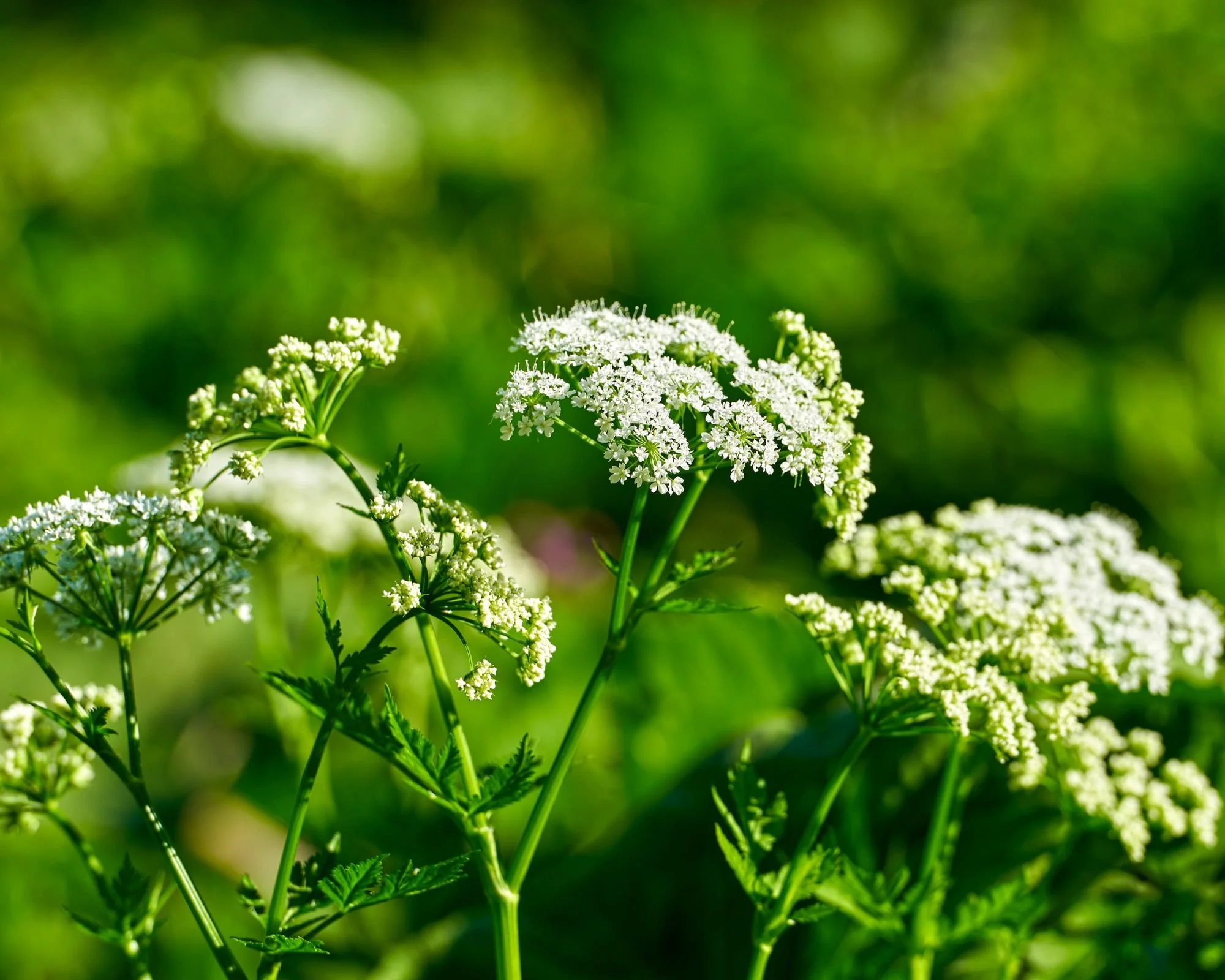Common, Poisonous Plants of the PNW
This is not a comprehensive list of all things toxic. It’s a list of the poisonous plants that I’ve run across most often and/or have scary stories about. These are the big three that anyone new to the PNW needs to know about first.
Foxglove
Botanical Name - Digitalis Purpurea
Uses - The heart medication, digitalis, is made from foxglove.
Fun Fact - New plants, just popping up, can easily be mistaken for borage or sage - even plant identification apps will mistake baby foxglove plants as sage. Don’t ask me how I know.
*Just kidding, I’m totally going to tell you later.
These beautiful plants feature tall spikes with bell shaped flowers in shades of white, pink, and purple. They grow all over the area, and while lovely to look at, every part of the plant is poisonous, and potentially deadly, if swallowed. The National Capital Poison Center recommends that people avoid planting or growing foxglove in gardens where children or pets play and advises careful supervision to ensure that no parts of the plant are put into mouths.
Mushrooms
Top 5 Include….
Conocybe
Death Cap
Deadly Galerina
False Morel
Destroying Angel
I’m a big fan of just avoiding all wild mushrooms. The PNW is home to some of the deadliest mushrooms in the world and some resemble harmless, edible mushrooms (but with ominous names). Our long rainy season, gray days, and acidic soils, create the perfect mushroom environment. While they are most prevalent in the fall and spring, they’ll pop up in the winter and summer as well. Experts recommend watching children and pets carefully.
About 5 years ago, our 110 lb Rottweiler, River Song, displayed signs of severe poisoning 3-4 hours after spending some time playing in the our backyard. As Eric rushed her to the emergency vet, I searched for the culprit and found a chewed through patch of wild mushrooms in the yard. She spent 4 nights in the vet hospital and likely only survived because of her size and because she started puking right away. She has lasting kidney damage from the experience. We now clear the yard of mushrooms daily!
Poison Hemlock
Botanical Name - Conium Maculatum
Uses - Ornamental
Poison hemlock has delicate leaves that look a bit like parsley and small, white flowers growing in clusters. It’s easily confused with wild parsnip due to its appearance and thick, white roots, and it can be confused with Queen Anne’s Lace. All parts of the plant are poisonous if ingested, and it’s toxic to the skin and respiratory system. It’s classified as a Class B Noxious Weed in the Washington State Noxious Weed List and experts recommend careful removal.
*Four years ago, we moved into our new home with lots of garden beds full of flowers, shrubs, and herbs. Since we weren’t sure what they were, I downloaded a plant identifying app and started snapping away. When a new plant came up as common kitchen sage, I plucked a leaf and bit in (in my defense, it was flanked by rosemary and parsley). It had no taste, so I scrolled down to alternative options, and purple digitalis was top of the list. I spit it out quick.
The medical provider and all around much more cautious human husband was not thrilled. When I confessed, several veins popped out and he went to the yard and angrily started ripping all of the foxglove out of the ground while muttering to himself…likely something to the effect of his wife having no impulse control and zero survival skills. So, watch littles, pets, and your friends and family with poor impulse control.




